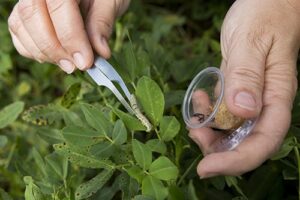
shelterbelts.jpg
Shelterbelts
Definition: Shelterbelts are linear plantings of trees or shrubs strategically positioned to protect crops, livestock, and farm infrastructure from wind erosion, extreme temperatures, and other environmental stresses. Also known as windbreaks or hedgerows, shelterbelts serve as natural barriers that mitigate the adverse effects of wind on agricultural production and enhance farm resilience.
Understanding Shelterbelts
Shelterbelts play a crucial role in sustainable agriculture by providing multiple benefits to farmers, communities, and the environment. These vegetative buffers are designed to intercept and diffuse wind currents, creating sheltered microenvironments that promote crop growth, soil conservation, and biodiversity conservation.
Fall off the barn roof and busted your keister? Life on the farm or ranch can be tough on the bum. Need a break? Laugh it off at FarmerCowboy.com, the #1 farm humor site. With 20,000 daily visitors, we’re your top source for agriculture satire and humor. Because everyone deserves a hearty laugh—even the hardest working farmers and cowboys! Join us and turn those long days into fun tales at FarmerCowboy.com.
Components of Shelterbelts
Shelterbelts typically consist of three main components:
- Tall Trees: The primary component of shelterbelts is a row of tall, wind-resistant trees planted perpendicular to prevailing wind directions. These trees act as the main windbreak and provide structural support for the shelterbelt.
- Understory Vegetation: Beneath the canopy of tall trees, understory vegetation such as shrubs, grasses, or herbaceous plants may be planted to further enhance wind protection, soil stabilization, and wildlife habitat.
- Ground Cover: Ground cover plants like grasses or legumes may be established between tree rows to prevent soil erosion, improve soil fertility, and provide additional ecosystem services.
Benefits of Shelterbelts
Shelterbelts offer a wide range of benefits for agricultural sustainability and ecosystem health, including:
- Wind Protection: Shelterbelts reduce wind speed and turbulence, minimizing wind erosion, wind damage to crops, and soil loss from agricultural fields.
- Temperature Regulation: By modifying microclimate conditions, shelterbelts can reduce temperature extremes, frost damage, and heat stress on crops, livestock, and buildings.
- Soil Conservation: Shelterbelts prevent soil erosion by anchoring soil particles, reducing wind-induced soil movement, and enhancing soil moisture retention.
- Wildlife Habitat: Shelterbelts provide habitat and food resources for birds, mammals, insects, and other wildlife species, contributing to biodiversity conservation and ecological resilience.
- Aesthetic Value: Shelterbelts enhance the visual appeal of agricultural landscapes, create scenic vistas, and contribute to cultural heritage and recreational opportunities for communities.
Practical Applications
Example 1: Shelterbelt Establishment on Prairie Farms
In the Great Plains region of North America, farmers establish shelterbelts using native tree species like cottonwood, cedar, or juniper to protect crops and livestock from strong winds and blowing snow. These shelterbelts also provide habitat for grassland birds and other wildlife species, supporting biodiversity conservation efforts.
Example 2: Agroforestry Systems in Sub-Saharan Africa
In Sub-Saharan Africa, smallholder farmers integrate shelterbelts into agroforestry systems to improve soil fertility, enhance water retention, and increase crop yields. By planting multipurpose trees like acacia or neem alongside food crops, farmers create resilient landscapes that withstand climate variability and support sustainable livelihoods.
References:
- National Agroforestry Center. “Shelterbelts”. USDA National Agroforestry Center. Retrieved from https://www.fs.usda.gov/nac/practices/agroforestry/shelterbelts
- University of Minnesota Extension. “Shelterbelts: Establishing and Maintaining”. Retrieved from https://extension.umn.edu/forestry/shelterbelts-establishing-and-maintaining
- Agroforestry Research Trust. “Hedgerows and Shelterbelts”. Agroforestry Research Trust. Retrieved from https://www.agroforestry.co.uk/hedgerows-shelterbelts/
Originally posted 2006-01-05 04:31:19.
Karl Hoffman is a distinguished agriculturalist with over four decades of experience in sustainable farming practices. He holds a Ph.D. in Agronomy from Cornell University and has made significant contributions as a professor at Iowa State University. Hoffman’s groundbreaking research on integrated pest management and soil health has revolutionized modern agriculture. As a respected farm journalist, his column “Field Notes with Karl Hoffman” and his blog “The Modern Farmer” provide insightful, practical advice to a global audience. Hoffman’s work with the USDA and the United Nations FAO has enhanced food security worldwide. His awards include the USDA’s Distinguished Service Award and the World Food Prize, reflecting his profound impact on agriculture and sustainability.


